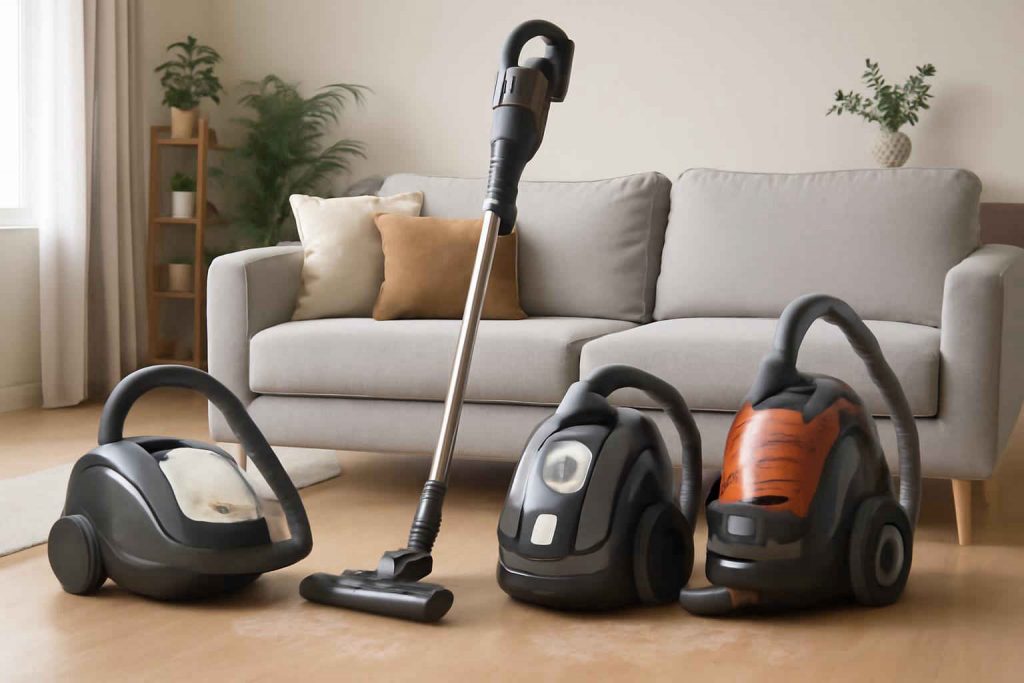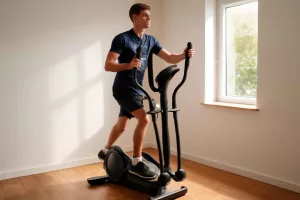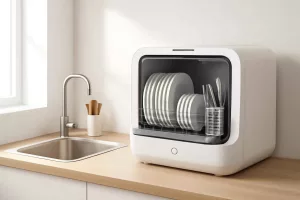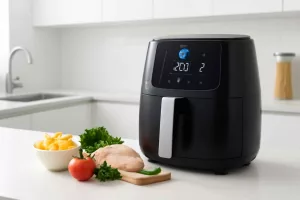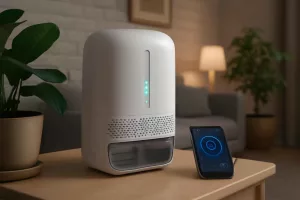Choosing between a bagged and bagless cordless stick vacuum can be confusing, especially for pet owners dealing with daily fur cleanup. Both styles offer portability and powerful suction, but their maintenance, filtration, and storage requirements differ. Whether you need a handheld tool for quick touch-ups or a full-size cleaner that tackles deep carpet fibers, this guide will walk you through every detail to help you select the ideal cordless stick vacuum for pet hair. If you’re ready to shop now, browse bagless cordless stick vacuums at Amazon or explore bagged options here Amazon.
What Are Bagged and Bagless Cordless Stick Vacuums?
Cordless stick vacuums combine the freedom of a cordless design with the slim profile of a stick body, making them ideal for quick cleanups and tight spaces. The primary distinction lies in debris collection: bagged models use disposable bags to contain dirt, while bagless vacuums rely on reusable dust cups or canisters.
Bagged stick vacuums typically feature sealed paper or synthetic bags that catch debris and trap allergens, minimizing airborne particles during emptying. This can be a boon for allergy sufferers and pet owners sensitive to dander. However, constantly buying replacement bags can add to the long-term cost, and full bags may reduce suction before you realize it.
Bagless models, on the other hand, use transparent dust cups that let you see when it’s time to empty. They often require less upkeep beyond regular canister rinsing, eliminating bag expenses. The dust cups can be emptied directly into the trash, but the process may release trapped hair and dust unless you follow specific cleaning steps. For guidance on tool attachments and storage, check our tips on best modular closet organizer systems for small spaces to keep your vacuum accessories in order.
When assessing models, consider weight, suction levels, runtime, and user-friendly maintenance. Understanding these basic principles will help you identify which design—bagged or bagless—aligns with your cleaning habits and budget.
Pros and Cons of Bagged Stick Vacuum Cleaners
Bagged cordless stick vacuums excel in containment and hygiene. Their closed system ensures that all pet hair, dust, and allergens remain locked inside the bag until disposal, which is critical for households with allergy sufferers. Popular models often include HEPA filtration in addition to the bag, capturing particles as small as 0.3 microns.
One major advantage is consistent suction power. As long as the bag isn’t completely full, performance remains steady because the debris is trapped out of the airflow path. This makes bagged vacuums reliable for tackling stubborn pet hair on upholstery and carpet without sudden drops in suction.
However, bags require periodic replacement. Depending on your usage—daily pet hair removal or weekly quick cleans—you could spend $10 to $30 per month on bags. Storage space for extra bags is also a consideration, and you might find yourself running out mid-clean if you forget to restock.
Disposal is straightforward: simply remove the bag and toss it in the trash, minimizing contact with the debris. But if you have multiple pets shedding constantly, managing bag inventory can be a hassle. Review additional power tool maintenance tips in our cordless electric hedge trimmer buying guide for insights on battery care that often apply to cordless vacuums too.
Pros and Cons of Bagless Stick Vacuum Cleaners
Bagless cordless stick vacuums appeal to budget-conscious shoppers who dislike the recurring cost of bags. The transparent canister allows you to see exactly what you’re picking up—dust, crumbs, or pet fur—so you know when emptying is due. Many users appreciate the quick release buttons that let you dump debris directly into the trash.
Without bags to replace, bagless models are more cost-effective over time. They also often include washable filters, further reducing ongoing maintenance expenses. If you store vacuum attachments in a dedicated corner, consider how versatile a mobile tool cart can be for organizing nozzles, brushes, and filters together.
On the flip side, emptying the dust cup can unsettle dust and dander if not done carefully. To limit airborne allergens, experts recommend emptying your vacuum outdoors or placing a paper towel in the trash can first. Wash the container and filter components every few weeks to prevent odors and maintain suction.
Performance can also fluctuate as the bin fills, and fine particles may cling to the canister walls, requiring more frequent cleanings. If you live in a multi-pet household, establish a routine empty-and-rinse schedule after each major cleaning session to keep your vacuum operating at peak efficiency.
Key Features to Look for in a Pet-Friendly Cordless Stick Vacuum
Suction Power and Motor Efficiency
Pet hair often embeds itself deep within carpet fibers and fabric upholstery. Look for models with at least 20–25 AW (air watts) of suction power. Brush roll designs with self-cleaning properties can help prevent hair wrap. High torque brush heads deliver more force to agitate embedded fur, while multi-surface controls let you switch between carpet and hard floors without manual intervention.
Battery Life and Charging Options
Battery runtime directly impacts your cleaning coverage. A runtime of 30–40 minutes is ideal for homes up to 2,000 square feet. Removable battery packs allow you to extend runtime with a spare unit, though this increases upfront cost. Fast-charge technology that delivers 80% power in 30 minutes is a plus for last-minute touch-ups. Many manufacturers offer battery health indicators to alert you when replacement is due.
Filtration System and Allergen Control
HEPA filters trap airborne pet dander and fine dust, essential for allergy sufferers. Multi-stage cyclonic systems separate larger debris before passing air through the filter, reducing clogging and maintaining performance. Sealed systems prevent unfiltered air from leaking during use. Look for wash-and-reuse filters rated at least H11 or higher for best results.
Attachments for Pet Hair Removal
Specialized motorized pet tools, crevice nozzles, and upholstery brushes enhance cleaning versatility. A mini motorized brush is perfect for stairs, car interiors, and pet beds. Soft roller heads glide over hard floors, capturing fine dust and hair without scratching. For maximum convenience, ensure all attachments snap easily onto the wand or main unit and have onboard storage or docking stations.
Maintenance Tips for Maximum Performance
Proper maintenance ensures your cordless stick vacuum cleans effectively and lasts longer. Begin by emptying or replacing debris bags before they reach 75% capacity to prevent suction loss. Bagless users should tap out the bin and rinse it monthly with warm water; allow it to fully air dry for at least 24 hours before reassembly.
Inspect filters every two weeks, tapping out loose dust and washing per manufacturer instructions. Avoid harsh soaps, which can deteriorate filter media. Check brush rolls for tangled hair and debris; use a pair of scissors to free wrapped fur. Lubricate rotating parts sparingly with manufacturer-approved lubricant to maintain smooth operation.
Battery longevity hinges on proper charging cycles. Avoid letting the battery fully drain; recharge after each use. Store spare batteries in a cool, dry place away from direct sunlight. For additional battery care practices relevant to cordless tools, see our cordless electric hedge trimmer battery tips.
Regularly wipe down the vacuum body and handle with a damp cloth to remove dust and pet hair. Check seals and gaskets for wear and tear; replace any cracked or loose parts to maintain airtight performance.
Frequently Asked Questions about Stick Vacuums for Pet Hair
Q: How often should I empty a bagless stick vacuum?
Empty the dust cup after each major cleaning session or whenever the fill line is reached. For pet homes, you may need to empty more frequently to maintain suction.
Q: Can I use a bagless vacuum without washing the filter?
Washing the filter every 4–6 weeks is recommended to prevent clogging. If you skip this step, expect reduced airflow and weaker suction.
Q: Are replacement bags readily available for all models?
Most leading brands offer OEM and third-party bags. Check compatibility lists before purchasing, or opt for universal fit bags when available.
Q: Do bagged vacuums cost more in the long run?
Yes, recurring bag purchases increase lifetime cost. Calculate annual bag expenses against initial savings on a bagless model to decide what fits your budget.
Q: What’s the ideal runtime for a cordless stick vacuum in a multi-pet home?
A minimum of 30 minutes is recommended, but 40+ minutes ensures you can complete full-house cleaning without swapping batteries.
Conclusion
Choosing between bagged vs bagless cordless stick vacuum cleaners ultimately comes down to your maintenance preferences, allergy concerns, and budget. Bagged models offer superior containment for pet dander and consistent performance, while bagless designs eliminate ongoing bag costs and allow quick visual monitoring of debris. Prioritize features like strong suction power, long battery life, HEPA filtration, and specialized pet tools to tackle fur on all surfaces.
Ready to make your purchase? Explore top-rated bagged stick vacuums on Amazon or compare leading bagless models here Amazon. For more home organization ideas, check our guide to modular closet systems. Keep your accessories neatly stored with a mobile rolling tool cart setup, and enjoy a fur-free living space with your new cordless stick vacuum.
